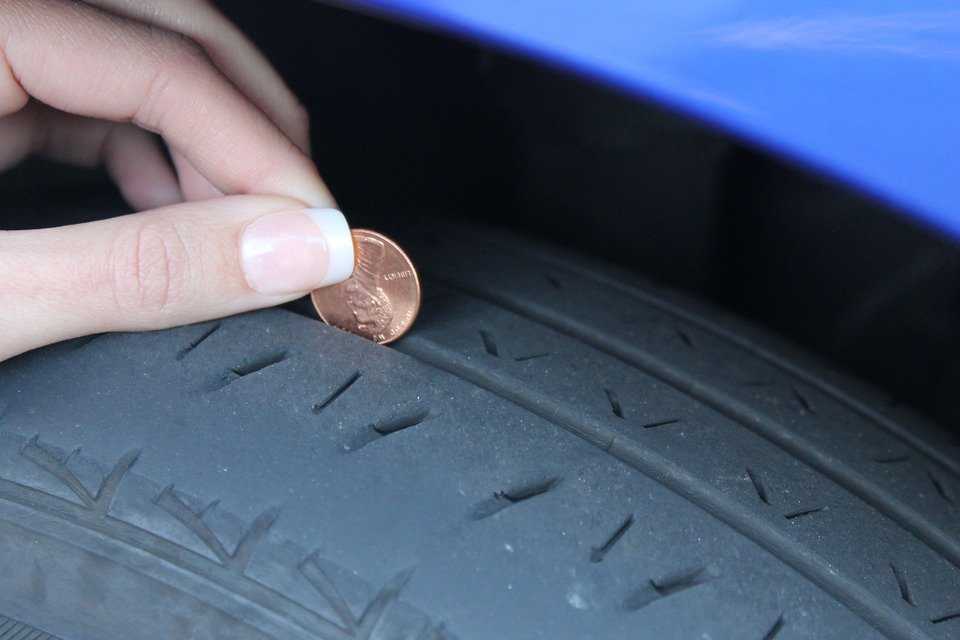Tire tread naturally wears down over time. No surprise there. But what happens when your tires wear down too much and become bald? And just how bald is “bald?” Bald is the point at which it's essential to replace your tires — for your safety and others on the road. Learn the signs of bald tires and what can happen if you drive with bald tires.
Just as a person is bald if they have little to no hair, a tire is bald if it has little to no tread. With each trip you take in your vehicle, the tread of your tires wears down. If you drive too long with worn-down tread, your tires can become bald.
What qualifies as a bald tire? A tire with at least one groove whose tread depth reaches 2/32 of an inch is technically considered bald. A 2014 survey by the Rubber Manufacturers Association found 12% of U.S. motorists reported at least one of their tires was bald.
It’s not hard to spot a bald tire. Many new tires come with what are known as indicator bars, also called parallel wear bars. If the tread is flush with the wear bars, you’ve got a bald tire. Even without those bars, you can tell whether the tread has worn down a lot simply by inspecting the tire.
You can check the depth of tire tread with a tread depth gauge. Tread depth gauges are available at auto parts stores and online.
You also can measure the tread depth by sticking an upside-down penny into a tread groove. If you can see all of Abraham Lincoln’s head, you should replace the tire. When you do this test, you might notice that some tread sections are deeper than 2/32nds of an inch. However, if any part of a tire fails the penny test, the tire should be replaced.
For road-safety best practices, Firestone Complete Auto Care recommends replacing your tires before they wear this much — around 4/32nds of an inch. Or, if you want to think of it in “penny test” terms, substitute the penny for a quarter, and stick it heads-down into your tires’ grooves.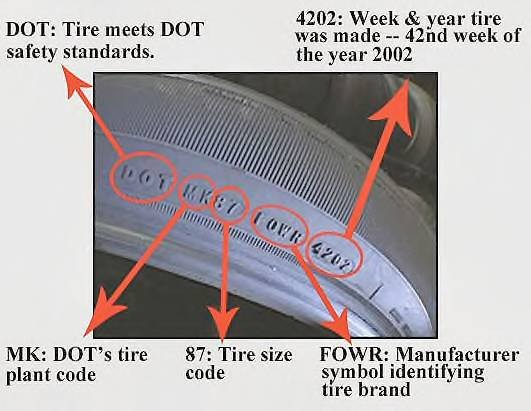 If Washington’s head is visible at any point, you should consider getting new tires.
If Washington’s head is visible at any point, you should consider getting new tires.
Several factors can contribute to tires becoming bald:
A tire that lacks the proper amount of air is underinflated, while a tire that’s carrying a bigger load of air than it’s supposed to is over-inflated. Both of these conditions can cause stress on a tire, leading to increased treadwear.
An unbalanced tire means there’s an uneven distribution of weight across the wheel or rim. At the same time, a misaligned tire (also called a misaligned wheel) refers to a vehicle suspension that needs to be adjusted. If these problems aren’t fixed, the tires might wear unevenly, potentially leading to baldness.
If you don’t keep up with tire maintenance, you boost the odds of underinflated, unbalanced, or misaligned tires. All of those can cause bald tires.
Bald tires might seem like they’re not a big issue, but they can actually produce big problems behind the wheel.
Driving around on treadless tires isn’t just bad for your driving experience. It can also jeopardize everyone’s’ safety, including that of your vehicle and the other motorists’ on the road. Use these tips to watch for bald tire warning signs, and bring your vehicle to Firestone Complete Auto Care when it’s time for a new set of tires.
Use these tips to watch for bald tire warning signs, and bring your vehicle to Firestone Complete Auto Care when it’s time for a new set of tires.
It’s the tire’s tread that provides the traction you rely on for a safe and smooth drive. As the miles add up, it wears down. Enough wear and you have bald tires.
Bald tires are risky to drive on for two reasons - they’re more susceptible to punctures, and they no longer have adequate tread depth to channel water from under the tread. Which means that, when it rains or snows you may lose traction (and control over your vehicle). For these reasons, bald tires are extremely risky to drive on and should be replaced.
Learn what bald tires are, causes, signs, and the risks associated with driving on them.
Simply put, balding tires are tires that have minimal or no tread left.
A tire's tread wears down with each mile driven, and there are various factors that affect how quickly it wears. Knowledgeable drivers are proactive in tire care and can prevent the risk of driving on bald tires.
Knowledgeable drivers are proactive in tire care and can prevent the risk of driving on bald tires.
Underinflated and Overloaded Tires
It’s the air inside the tire that carries the weight of the vehicle. A tire without enough air to carry the load is considered “under-inflated”. This is bad because it causes a lot more stress on the tire than it was designed for. A tire carrying a load greater than it was designed for is considered “overloaded”. Just like the under-inflated tire, it’s subject to higher stresses than it was engineered for. In both cases, the result is reduced treadwear, and in extreme situations the tire could fail, which people often refer to as a “blowout”.
Unbalanced and Misaligned Tires
Tires and wheels often have areas that are a bit heavy or light. “Balancing” the tire/wheel assembly involves the use of a machine which tells the technician to add weight in specified places to make the tire/wheel’s weight equal all over. If this isn’t done, the tires may not wear evenly, and the driver may feel a vibration at higher speeds.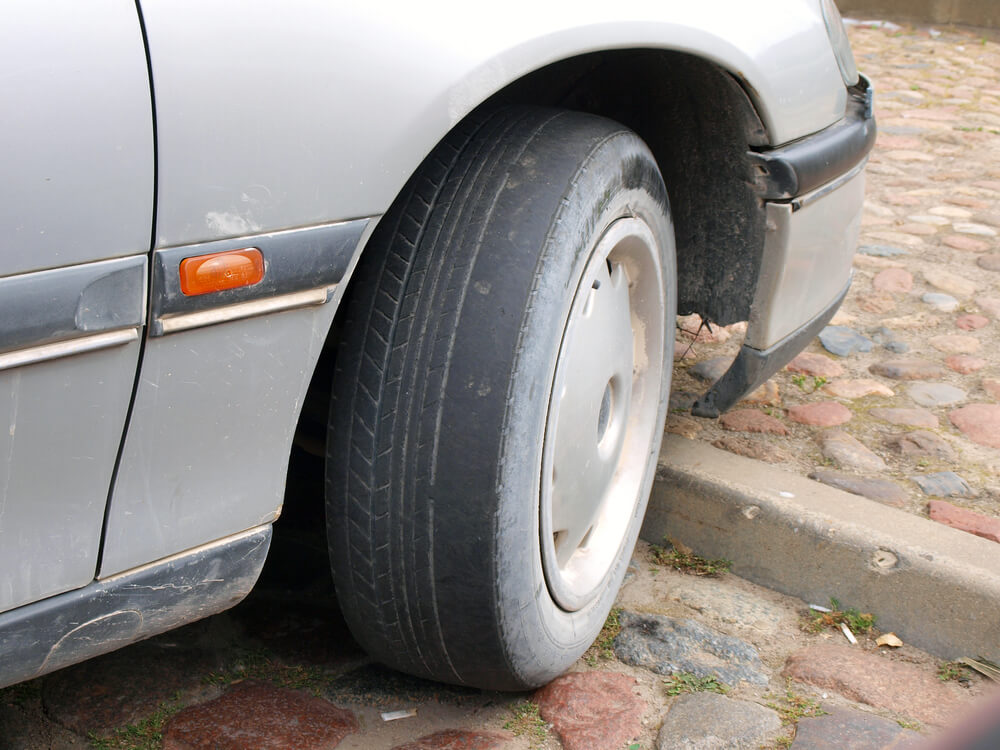
Alignment is important because car makers design the suspension so that tires will roll properly for stable handling, strong traction and good treadwear. When the suspension gets out of specification it’s described as being “out of alignment”. That means the tires are no longer rolling straight; they’re rolling at an angle instead of straight ahead or are tilted from vertical. This often results in increased treadwear, uneven treadwear, and in some cases, the car “pulling” to the left or right.
Neglected Tire & Vehicle Maintenance
Keeping up with the proper maintenance helps a driver to be more aware of when tires are wearing. Neglecting tire maintenance increases the chance of driving on unaligned, underinflated, or unbalanced tires, which, in the end, may result in driving on bald tires.
Recognizing the signs can help drivers know when their tires are going bald and make them aware of when replacement is needed.
Visible Wear Bars
Once the tread is completely worn, tire wear bars (“Treadwear Indicators” in engineering-speak) become more noticeable. They’re about the width of a pencil, and they run across the base of the tread from side to side. They’re most obvious once the tread depth reaches 2/32”.
They’re about the width of a pencil, and they run across the base of the tread from side to side. They’re most obvious once the tread depth reaches 2/32”.
If the tread is worn down to the treadwear indicators the tire is no longer safe or legal for use and must be replaced.
Seeing Low Tread
If it appears the tread is heavily worn, you may check it with this simple and effective tread check at home:
Take a penny and insert its edge into a groove in the tire’s tread so it touches the bottom.
The penny should be placed so that Lincoln’s head is inserted into the tread
If the top of Lincoln’s head is fully visible, the tire’s tread depth is at or below 2/32” (the legal minimum) and the tire should be replaced.
Cracks and Bulges
You should perform an overall visual inspection of your tires periodically, especially if you feel or hear anything unusual from them when driving. Look for cracks or cuts deep enough to expose the steel belts or body cords. Also check for unusual bulges in the tread or sidewalls - they could be a sign of internal damage. If you notice something that you’re not sure of, don’t hesitate to take it to a professional to have it checked.
Also check for unusual bulges in the tread or sidewalls - they could be a sign of internal damage. If you notice something that you’re not sure of, don’t hesitate to take it to a professional to have it checked.
Driving on bald tires can result in vehicle damage from either tire failure or loss of vehicle control, and either is likely to come with an unwanted repair bill. Prevent unnecessary expenses and risks by replacing bald tires immediately.
Lost Control and Hydroplaning
When it rains, driving on bald tires increases the chances of skidding or hydroplaning. and possible accidents, needed repairs, and hefty insurance costs.
Poor Brakes
When driving, a vehicle’s brakes are trusted to work no matter the speed. But brakes don’t provide traction, tires do. So, when driving on anything other than a perfectly smooth road free of sand, dirt and debris, bald tires compromise your brakes’ ability to stop by providing reduced traction Poor braking efficiency increases the chance of being involved in an accident, plus adds unwanted repair costs.
Punctures
Bald tires are more easily punctured due to the lack of remaining tread. In addition to the possibility of a flat tire, a puncture could cause a blowout, and might even result in a loss of control of your vehicle.
We depend on our tires for our safety when driving; it is vital that they are taken care of properly. Be proactive in replacing tires when they’re considered “bald” - that is, are worn to the 2/32” treadwear indicators. A little attention goes a long way to help you avoid expensive problems, so be sure to check your tires’ tread and keep them properly maintained to help extend their tread life.
Many parts undergo wear, but due to the frequency of use, it is most noticeable on tires. Every motorist at least once faced with such a problem. Finding a solution is very simple - just buy new tires. But next time it is important to determine why this happened.![]()
A lot depends on the speed of traffic, air temperature, road surface, tire pressure, vehicle load, etc. There are many factors that affect tire wear, but these wheel elements lose their original appearance during long-term operation in any case. True, if you properly handle rubber and know all the nuances, you can extend its shelf life.
The most common causes of tire wear:
In general, rubber wear can be divided into two types:
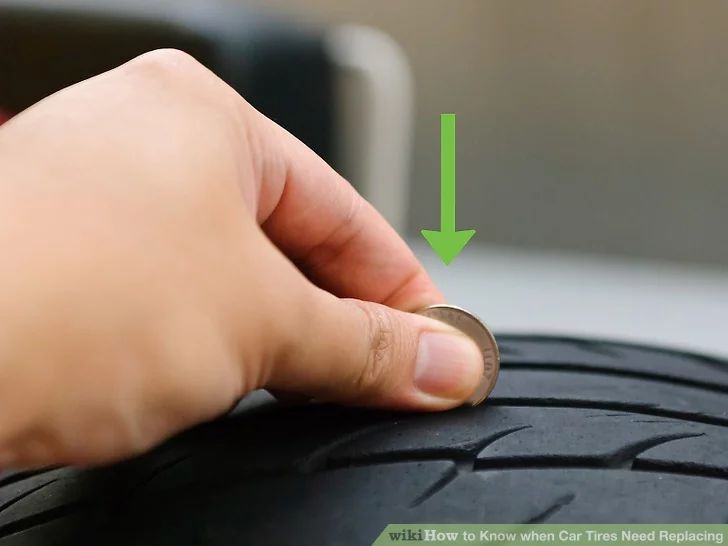
If normal wear can only be said that the life of the tires has deservedly come to an end and you need to buy new ones, then with regard to premature wear, the following types are distinguished:
Tires often go bald after a couple of thousand kilometers. This is the first sign of uneven wear, which experts call patchy. Most often, he talks about the low quality of rubber, problems with the car, or the inexperience of the driver. Slip starts, hard braking and aggressive driving can kill any tire. Even if there are winter tires, the car can fly off the road. You can correct the situation if you replace the rubber or adjust it on a special stand at the service station.
There are three main causes of wear:
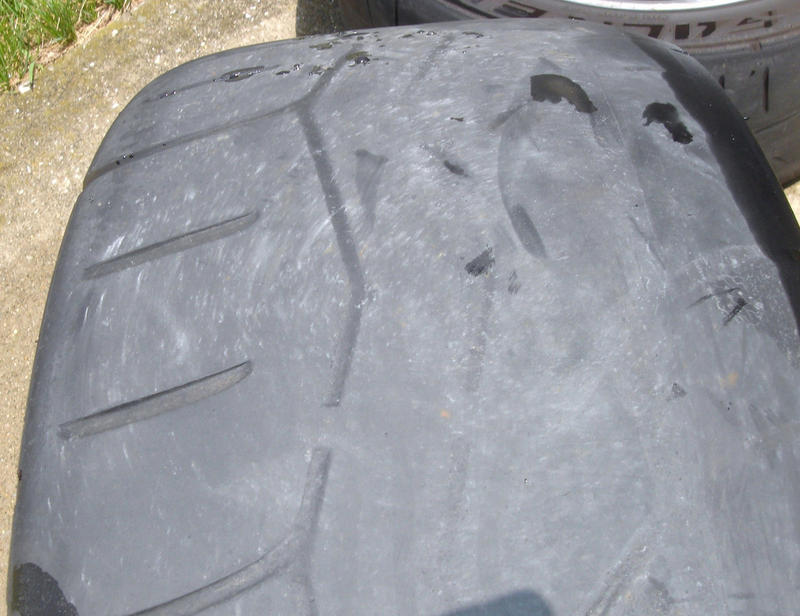
Tires wear out both on the inside and outside with increased pressure, fast braking and inept driving. If the wear is uneven and one side has worn out more than the other, then the tires can be swapped, but this action should be performed by a professional. The best way to correct the situation is to contact the tire service.
Each driver decides for himself whether to ride on bald tires or buy a new one, but it's better not to risk your own life and the lives of others. It is recommended to regularly diagnose and monitor the condition of the tires.
Tires with worn tread can lead to accidents at any time of the year and in any weather. Thinking that good tires are needed only in ice is a mistake. A worn out tread does not provide proper grip even with high-quality road surfaces in dry weather. In the rain, the behavior of the car is generally unpredictable. Hydroplaning on bald tires can lead to an accident.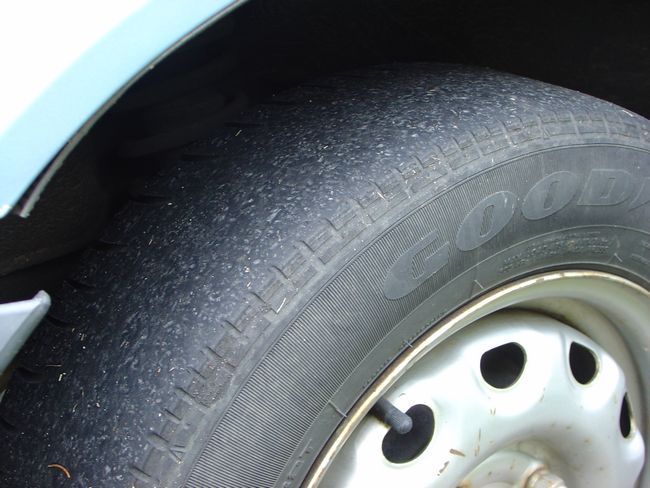
Difficult to brake with bald tires, especially on slippery surfaces. A strong turn of the car, unexpected turns can lead to an accident. Most often, these situations happen to those who do not conduct timely diagnostics and do not buy new high-quality tires. It is important to note that the average life of any rubber is 5 years.
The driver must regularly check the wear. Such tires very often puncture, slide on water, lead to an accident, reduce braking and stability on the track. The total wear limit is 1.6 mm.
The following methods of determination are distinguished:
The best and most popular way to measure tire wear is with a wear indicator, which is usually located deep in the longitudinal grooves. Each tire model has its own tread depth, which must be checked using special methods, because when this depth wears out, it becomes dangerous to drive on wet, slippery or icy surfaces.
Using technical tools, the fastest and easiest way to determine the depth of wear of rubber. This requires a special device. This device can be purchased at any service station or auto parts store.
It must be placed directly in the tread groove and then switched on. Since the device is electric, numbers should be displayed on its screen. The optimal value is 2 mm for summer tires and 5 mm for winter. If a special device showed lower numbers, then you need to urgently change the rubber coating.
History
Categories
Products
Cars
All results
03/20/2017
How to determine tire wear? At first glance, everything seems simpler than simple, it is necessary to divide the remaining tread height by the original height, however, the result of these actions will be erroneous.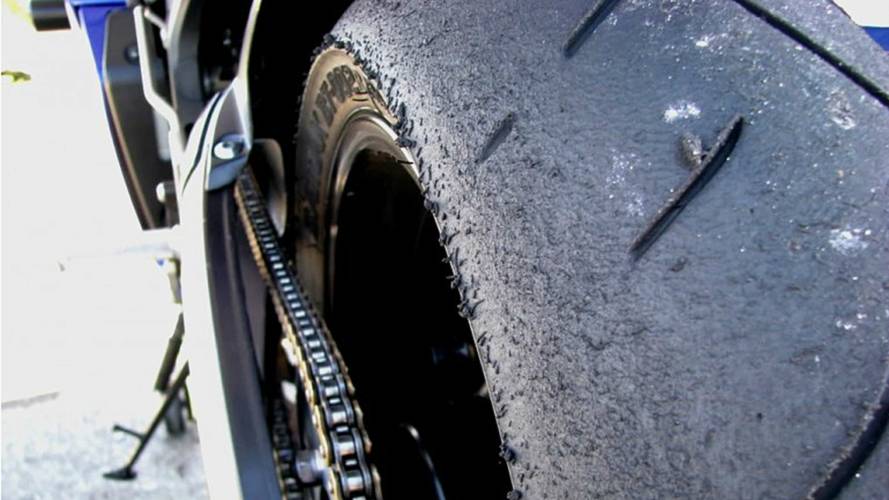 So how do you know when it's time to start thinking about buying new tires?
So how do you know when it's time to start thinking about buying new tires?
To find out the remaining tread height, you need to measure both tires from the same axle and select the minimum tread height from the obtained ones.
According to the traffic rules, 2 mm is a critical mark, but it should be understood that this indicator can only be applied to summer tires, and even then not to all. Winter will lose its main characteristics already by 4 mm. Therefore, your real minimum tread will be in the range from 2 to 4 mm, depending on the type of tire, seasonality, as well as on your individual operating conditions.
For such a simple measurement, you will need any suitable device: for example, a caliper or a ruler with a depth gauge. You can also use an ordinary coin inserted into one of the grooves on the tire. If the tread hides only the rim of the coin, you need to change the tire, but if half the coin is hidden, then there is no point in thinking about buying a new one. However, with such a measurement, the accuracy of your measurements suffers, and you will not receive accurate data on the uniformity of wear.
However, with such a measurement, the accuracy of your measurements suffers, and you will not receive accurate data on the uniformity of wear.
The tire tread height must be measured at a minimum of 6 points. For example, in the center and on both edges of the tread, as well as at points around the circumference of the tire. Important: the measurement results at all points must match !
1. The tread is higher at the edges than at the center. This indicates that the tire has been inflated for a long time. As a result of this use, the load on the tire's power carcass has been increased. Driving on this tire is not recommended.
2. Tread higher in the center than at the edges means the tire has not been underinflated. If there are no obvious signs of driving on a completely flat tire (the pattern is erased from the upper part of the sidewalls), then you can still ride on such a tire, but even in this case, wear must be determined by the minimum tread height.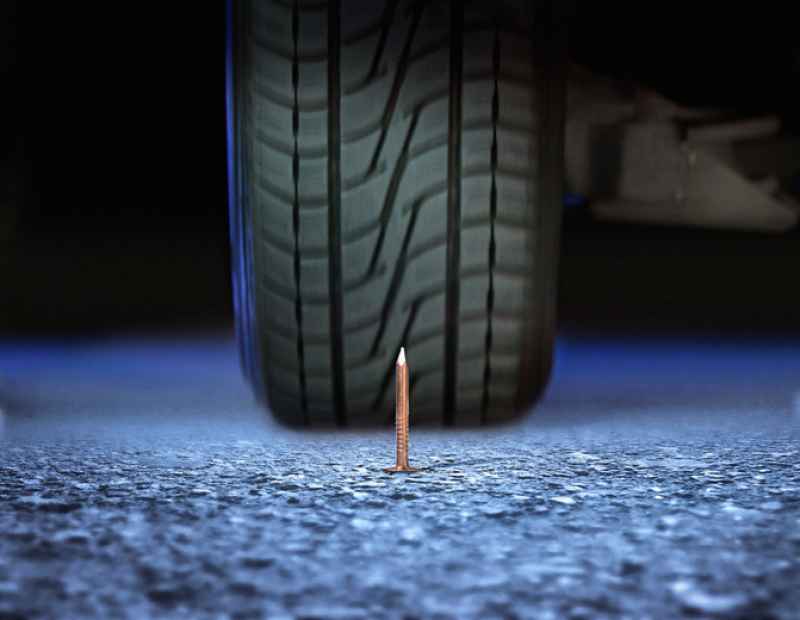
3. The tread is unevenly worn across the width (one of the edges of the tire is worn out). Such wear indicates a faulty vehicle suspension.
4. The tread is worn unevenly around the circumference of the wheel (at different points on the circumference, the central or side blocks have different heights). Such wear indicates the "extreme" preferences of the owner. The tire has most likely seen extreme braking and/or acceleration. This tire can be safely scrapped.
5. Erased pattern (pattern) in the upper part of the sidewall of the tire (junction with the tread area - the rubber is “chewed”). A similar defect is the result of a long drive on a badly flat tire. This tire is not recommended.
6. Different tread wear on two tires from a pair (from the same axle). Such wear indicates a malfunction of the suspension (wheel alignment). If the difference in tread height is greater than 1 mm, there is a risk of uncontrolled skidding if such a pair of wheels is installed on the front axle of the car.